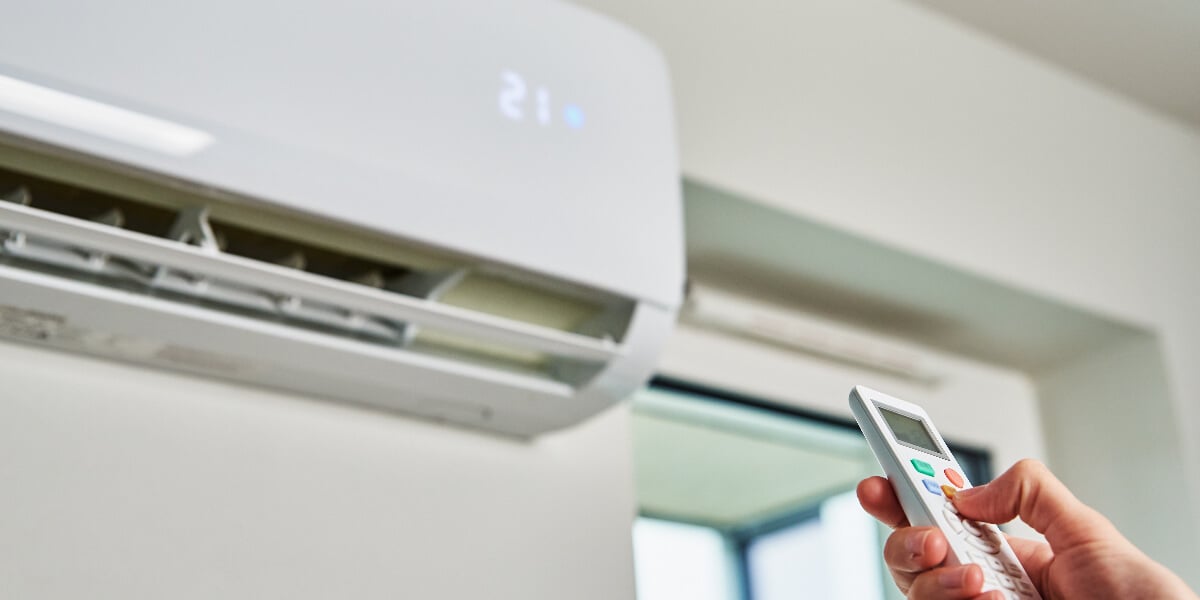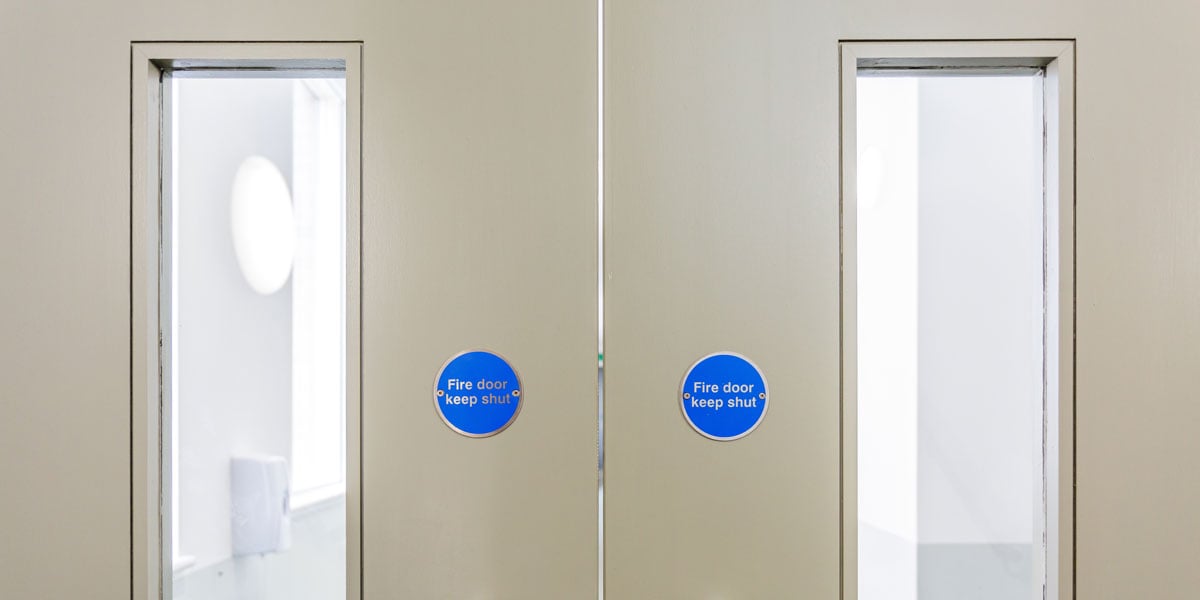Improving workplace air quality in a post-covid world
The coronavirus pandemic has shone a spotlight on the importance of maintaining good air quality within workplaces such as offices, schools and hospitals.
Poor indoor air quality can cause a range of health effects including headaches, dizziness and nausea. In extreme cases, it can lead to asthma, cardiovascular disease, cancer and even death.
So what are the common airborne pollutants we need to be worried about? What control strategies can be put in place to improve air quality within workplaces? And how has the landscape changed since the pandemic?
Common airborne pollutants
Airborne pollutants that have the potential to cause serious health effects include:
- Volatile organic compounds (VOCs) - chemicals emitted from construction or furnishing products
- Formaldehyde - a VOC released from wood-based products
- Carbon dioxide (CO2) - from human and animal respiration and combustion products
- Ozone (O3) - arises from photochemical reactions in the ambient air, also produced indoors by some electronic equipment such as printers and photocopiers
- Nitrogen dioxide (NO2) - main sources are from combustion and transport
- Carbon monoxide (CO) - odourless gas produced by the incomplete combustion of most fuels
- Particulate matter (PM) - made up of a complex mixture of solid and liquid particles suspended in the air
- Biological pollutants - e.g. mould, fungal particles, bacteria and pollen
- Moisture - from respiration and activities such as cooking and washing
- Odour - from ventilation extracts, including hose in kitchens and consumer products such as aerosols
- Industrial pollutants - generated in urban areas e.g. from waste incinerators, laboratory fume cupboards, vehicle spray booths
- Ground pollutants - gasses from the soil beneath a building can contain hazardous substances
The extent of the effect of a particular pollutant on human health depends on its concentration and the duration of exposure, as well as individual factors such as the age and gender of occupants.
Control strategies
Control strategies for reducing the concentration of air pollutants in the indoor environment depend on the type and location of the source and activity.
Ventilation with outdoor fresh air will dilute and flush out pollutants derived from indoor sources but will not eliminate them completely. In fact, the incoming ventilation air may itself be polluted from outdoor sources, which will place an additional burden on indoor air. Care needs to be taken in selecting the correct mitigation strategy to give optimum indoor air quality for health and wellbeing.
Control strategies include:
1. Reducing ingress of outdoor pollutants
Air pollution levels in the UK are still relatively high and additional measures, such as those listed below, are required to reduce the ingress of outdoor pollutants into the indoor environment.
Building airtightness - Sealing the building envelope and increasing its airtightness will help reduce air pollution from permeating the building.
Ventilation air intake position - Ventilation intakes need to be placed away from the direct impact of short-range pollutant sources, such as roads, especially if they are within a few metres of the building. The intakes can be placed on the roof of the building away from ground-based pollutant sources, or in courtyards and enclosed spaces.
Filtration - Filtration is used to physically remove particles from the ventilation air supply. Virtually all mechanical ventilation systems incorporate some form of filtration.
2. Reducing indoor pollutant emissions
There are four key ways to reduce indoor pollutant emissions:
Indoor air pollution source control - Controlling the source of the pollutant is more effective than dilution with fresh ventilation air, especially as the outdoor air may be contaminated. The generation of internal pollution can be avoided by using low-emitting furnishings and carpets and discouraging pollutant-emitting activities.
Ventilation - This is most suited to providing fresh air for occupants’ respiration and to diluting and removing unavoidable pollutants such as those that arise from activities like cooking, washing, and use of office equipment. These localised sources of pollutants should be extracted by localised or central ventilation.
Recirculation - In mechanically ventilated commercial buildings, ‘recirculation’ of part of the indoor air almost always occurs, so some form of filtration, especially for particles, is normally required.
Filtration - Indoor air can be cleaned by filtering, and then recycled within the building or room. Filtration systems can range from those that treat air in the mechanical ventilation system of the building to devices in individual rooms that may be fixed or stand-alone.
Requirements for good indoor air quality (IAQ)
Good indoor air quality (IAQ) may be defined as air with no known contaminants at harmful concentrations. So what are the requirements for good IAQ and how have they changed since Covid-19?
Pre-Covid
Pre-Covid, the requirements for good IAQ included:
- Provision of sufficient fresh air supply rates to dilute and remove pollutants
- Effective ventilation
- Low external pollution concentrations
- Low pollutant emission rates from internal sources, including materials
In an office environment, the fresh air ventilation rate is 10 litres/second per person. Therefore, the total fresh air flowrate for a room is given by the flowrate for a room is given by the flowrate per person multiplied by the number of occupants.
Post-Covid
We know that Covid-19 transmission can be particularly effective in crowded, confined indoor spaces such as offices and schools. This makes it more important than ever to ensure these spaces undertake a risk assessment to ensure they are getting the best air quality.
Mechanical ventilation systems can help improve air quality. It is generally recommended that central recirculation systems should be not used. However, there are solutions that enable them to still be used. For example, closing the recirculation valve on the system will prevent it being recirculated. There is also evidence that an AHU recirculation system can be set up so that the pressure between the supply and extract chambers can be used so that any contaminates don’t get recirculated and are taken through the ductwork discharge through to the atmosphere. You can find more information on the REHVA website.
To completely remove particles and viruses from an air handling unit, HEPA filters are needed. But where this isn’t an option, duct installation of disinfection devices, such as ultraviolet germicidal irradiation (UVGI) may be used.
Installing CO2 sensors in under ventilated spaces can also be effective. These wireless sensors allow for instant access to your IAQ data and signals can be sent to warn engineers and building occupants to use windows and mechanical ventilation systems to adjust the air quality when needed.
As buildings start to re-open post-Covid, it’s important to undertake a risk assessment to ensure effective ventilation is being provided throughout the building. Looking ahead, we may see laws n air quality becoming more stringent, with employers having a legal obligation to carry out a risk assessment akin to the current regulations around legionella control.
Topics: Ventilation Hygiene & Testing

Written by Jon Greaves
Jon has progressively worked through operational roles, account management, technical management, and senior management roles over the last 16 years within one of the group companies before moving into the role of Water and Air Managing Director. Jon has experience across multiple sectors of water and air compliance, including district energy networks; data centres; healthcare; food and beverage and facilities management. Jon acted as a corresponding steering committee member on CIBSE CP1 – Heat Networks Code of Practice for the UK released in 2020.




